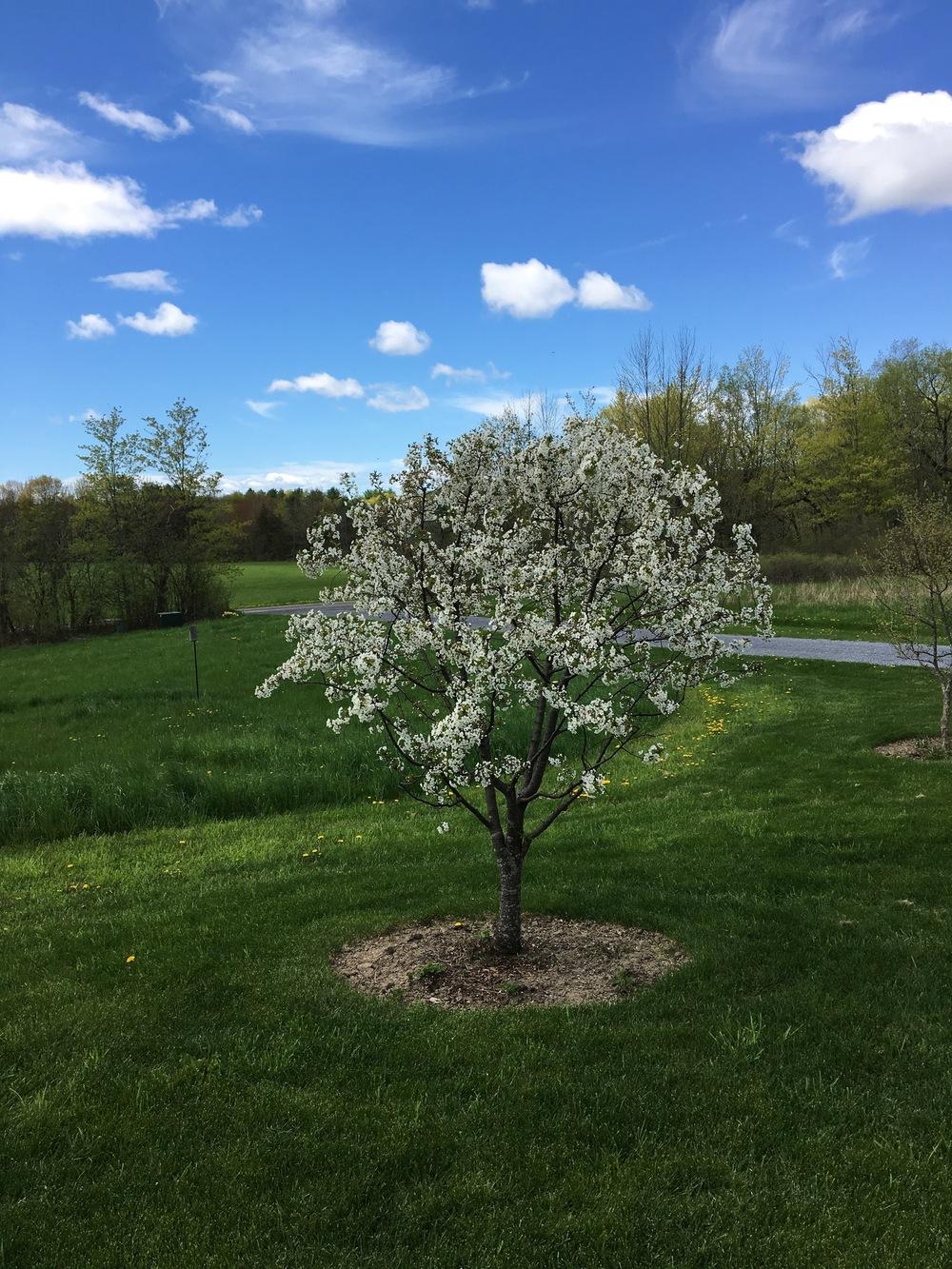 While it's great that more people would like to plant trees in their yards, planting the right way will ensure these trees are there for decades. There is a growing movement in Ecological Landscaping to highlight how to properly plant a tree using updated information. Let me share some thoughts on how to plant and care for your trees.
While it's great that more people would like to plant trees in their yards, planting the right way will ensure these trees are there for decades. There is a growing movement in Ecological Landscaping to highlight how to properly plant a tree using updated information. Let me share some thoughts on how to plant and care for your trees.
Trees from the Garden Center
Most trees you purchase as a container or a balled-and-burlap tree have been dug from tree nurseries where 90% of their roots have been damaged or removed. The larger the tree, the more root damage probably happened. While we all want a beautiful, large tree in our landscape as soon as possible, it's best to purchase younger and smaller trees. These trees will recover faster from the transplanting process and will start growing again sooner than larger trees.
Also, select trees whose roots are firmly attached to the root ball. If you can rock the trunk in a balled and burlap root ball independently of that rootball, look for another tree.
Bringing it Home
Once you have the tree of your dreams, bring it home and water the root ball or container well. Plant your tree in a location where it will thrive based on its sun and soil water drainage needs. Don't plant under or near overhead utility wires. Dig the hole 3 times the diameter of the root ball wide and as deep as it is in the container. Don't loosen the soil in the bottom of the hole or the tree may settle too deeply.
When ready to plant, remove the burlap and wire cage or take the tree out of the container. Look at the base of the trunk. The root flare is a spot where the roots flare out from the trunk. In most nursery grown trees, this area is often buried in soil. That's not good. Buried root flares cause slow growth and invite diseases to attack the trunk. The tree's root flare should be visible at the base of the tree, so gently remove the soil from the top of the root ball until you see the flare.

Then examine the roots. You might even wash off some of the soil to get a better look. Any roots that are circling the trunk should be cut and redirected away from the trunk. Years down the road, these roots will eventually strangle the tree once they grow large.
Place the tree in the hole, keeping the root flare exposed. Back fill with native soil unless it's very poor soil, then mix in some topsoil and mycorrhizae fungus to help with new root growth. Water in well and keep well watered the first year. One of the best ways to keep new trees consistently watered is to use a gator bag. Fill these bags a few times a week and let the water drip out from the bottom emitters. This keeps the soil evenly moist. There's no need for staking or fertilizing the tree the first year.
Yearly Care of Your Trees
Most trees growing in the right location on decent fertility soils won't need fertilizer and, once established, shouldn't need supplemental watering. Many people like to mulch the trees annually in spring. This needs to be done carefully.
When applying bark mulch, remove the old mulch first and compost it. Apply a 2- to 3-inch thick layer of fresh mulch. Don't mulch over the root flare and avoid volcano mulching. Volcano mulching is when year after year mulch is piled around the trunk and smothers the root flare and roots. Eventually diseases get into the trunk and your prized tree, that's maybe years old now, will die. It's even a good idea to plant ground covers under your tree instead of mulch to protect the trunk from lawn mowers and string trimmer damage.



Follow these simple guidelines to help your tree grow strong and be an attractive feature in your yard for years.
Until next time, I'll be seeing you in the garden.
 Charlie Nardozzi is an award winning, nationally recognized garden writer, speaker, radio, and television personality. He has worked for more than 30 years bringing expert gardening information to home gardeners through radio, television, talks, tours, on-line, and the printed page. Charlie delights in making gardening information simple, easy, fun and accessible to everyone. He's the author of 6 books, has three radio shows in New England and a TV show. He leads Garden Tours around the world and consults with organizations and companies about gardening programs. See more about him at Gardening With Charlie.
Charlie Nardozzi is an award winning, nationally recognized garden writer, speaker, radio, and television personality. He has worked for more than 30 years bringing expert gardening information to home gardeners through radio, television, talks, tours, on-line, and the printed page. Charlie delights in making gardening information simple, easy, fun and accessible to everyone. He's the author of 6 books, has three radio shows in New England and a TV show. He leads Garden Tours around the world and consults with organizations and companies about gardening programs. See more about him at Gardening With Charlie.